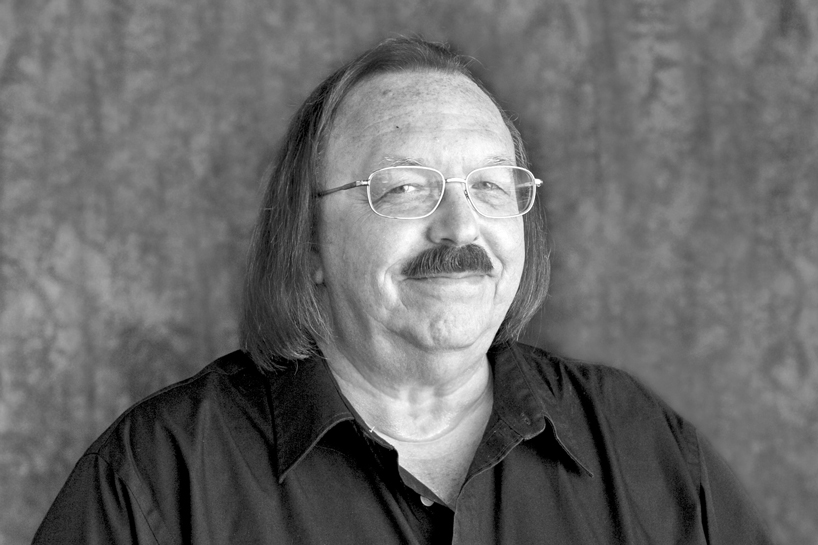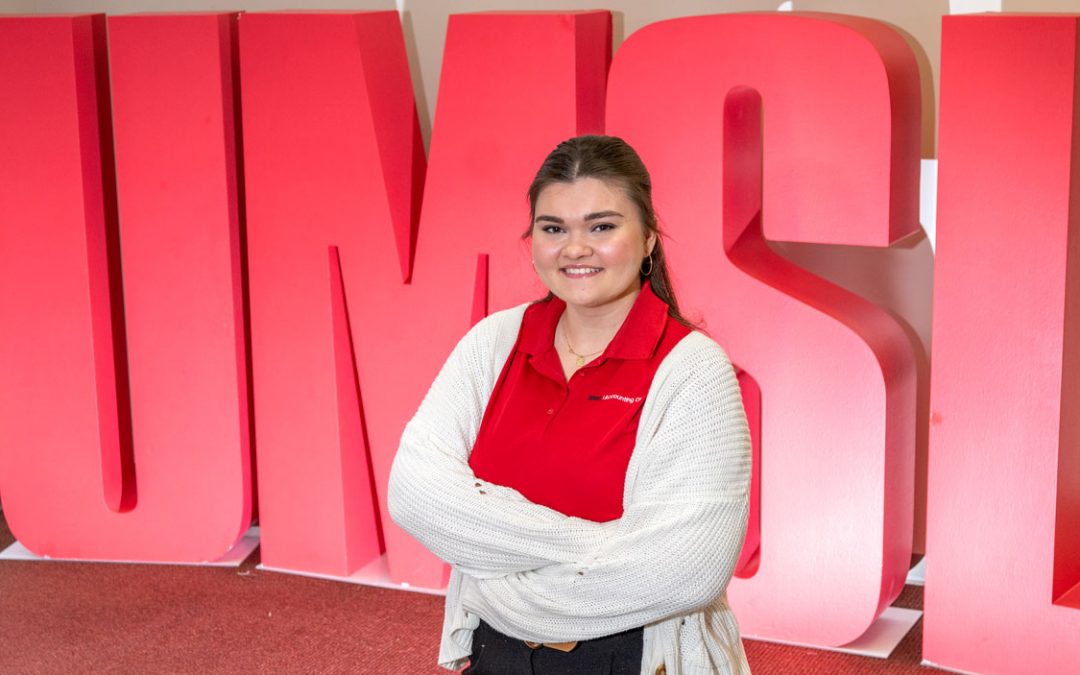
J. Frederick Fausz, associate professor of history at UMSL, will speak this weekend at the St. Louis Metromorphosis conference at UMSL. (Photo by August Jennewein)
St. Louis historians and experts from around the country will gather this weekend at the University of Missouri–St. Louis to discuss the past, present and future of the region. An 800th birthday celebration for King Louis IX, commonly known as Saint Louis and the namesake for the city, will cap off the first day of the St. Louis Metromorphosis conference on April 25. In anticipation of the party and the king’s birthday party, UMSL Daily caught up with J. Frederick Fausz, who has been a faculty member in the Department of History at UMSL since 1991, to ask him a few questions about the conference and St. Louis in general.
Recently, I heard a local writer say that St. Louis was built by a boy (Auguste Chouteau), and this boy completed his project under budget and ahead of schedule. How much of that is hyperbole?
By his own admission, 14-year-old Chouteau was assisted by two wise and much older men, as well as local laborers from Illinois who knew how to construct French colonial buildings. The first structure in St. Louis was a large warehouse for storing furs, followed by Pierre Laclede’s home built of limestone. Since wood and stone were available here in abundance, and the original settlers brought other building materials from their former homes in Illinois, there was little expense of any kind. There was no real “schedule,” but the village developed fairly rapidly with more residents than homes to house them for a time.
Your opening remarks for the conference this weekend will be about the “adaptive identities” of St. Louis throughout its 250 years. Without giving away too much, can you say a little bit about what you mean by “adaptive identities?”
Perspectives on the identity and importance of St. Louis changed many times throughout the centuries, as a culturally-mixed population grew and institutions evolved, both locally and nationally. So residents and outside observers were always creating new labels and snazzy slogans for various reasons. For instance, Laclede and Chouteau made no documented mentions of the two dozen mounds that Mississippian Indians from Cahokia had constructed here at least 500 years earlier. But as archaeology gained popularity in the early 19th century, St. Louisans adopted the name of “Mound City,” even as they were destroying those man-made monuments to make room for urban “progress.”
Promotional material for the conference says that “recent research has reshaped our understanding of the city’s significance.” Can you say a little bit about this recent research and the change in understanding it has caused?
Within and across generations, historians adopt new perspectives and pose new questions about the past. In the last 30 years, research on the long-ignored French colonists in the Mississippi Valley has expanded dramatically, finally recognizing the accomplishments of those non-English-speaking pioneers. Modern Americans of many hues and multiple cultures now recognize how progressive and “modern” Laclede’s town was in pursuing a profitable partnership with Indians in a not “savage wilderness.” Today’s citizens can also gain a new appreciation for the city’s past, present and future by realizing how St. Louis faced the same unprecedented socio-economic crises in the 20th century as other metropolitan areas and achieved better results than many.
The first day of the conference coincides with King Louis IX’s 800th birthday. Other than being the city’s namesake, how important is Louis IX in St. Louis’s history?
The “City of the Sainted King” achieved some distinction, since Louis IX was the only French monarch honored with sainthood. That name always associated the city with French Catholicism (later called “the Rome of the West”), but naming Ste. Genevieve after the founder of Paris did the same thing. Personally, I do not see much of a practical impact, given the huge social, political, intellectual and technological differences between the 1200s, 1700s, 1800s, 1900s and today. Some would say that the medieval monarch who had a French father and a Spanish mother epitomized Bourbon St. Louis in the 18th century, with its dominant French population and Spanish governance. But that represents hindsight, since Laclede knew nothing of the Spanish takeover of the Louisiana Territory when he named his town to flatter the current king of France, Louis XV, whose patron saint was Louis IX. Louis the Saint was a beloved king in the 13th century, more benevolent than most, but his slaughter of Muslims on two crusades did not square with the cultural appeasement of Indians by French merchants seeking to do well and Spanish commandants trying to do good in St. Louis. It was ironic that St. Louisans embraced the medieval royal saint more in the democratic and industrial — and less monarchical and religious — 20th century than they had earlier!
In 2011 you published a book titled “Founding St. Louis, First City of the West.” You have another book about St. Louis due out this year. What is it about St. Louis that keeps you interested in returning to it time and again?
My career as a historian has allowed me to live in Kentucky, Virginia, Maryland, and Missouri — and specifically in the cities of Chicago, Baltimore, London and St. Louis. I prefer to research local history, because original, unpublished documents in obscure archives provide fascinating details that I like to share with native-born residents. My studies of fur trading across several centuries, from the Atlantic coast to the Midwest, for instance, have benefited from my having resided in so many different areas. My next book is an anniversary history — “Historic St. Louis: 250 Years Exploring New Frontiers” — that had to be done in 2014. It will be out in the summer and was the most challenging to write, given the large span of time and the need to provide some 150 rare illustrations. But it was also fun, and I think I have contributed some fresh perspectives as an outsider who was not born here.
St. Louis isn’t without its share of problems. Staggering population flight from the city and the unfortunate “Delmar Divide” come to mind. How do these issues fit within the larger, 250-year-long history of the city? Recently, more and more young people seem to have embraced the city proper and local pride does seem to be on the up. What is your prognosis for St. Louis?
I deal with the pros and cons of recent trends in the epilogue of my latest book. Without giving away too much, I am very optimistic about the future of St. Louis, largely due to the inspiring UMSL students I have taught since 1991.
Media Coverage:
KMOX (1120 AM)
This story was written by Ryan Krull, a student pursuing an MFA in Creative Writing from UMSL.















